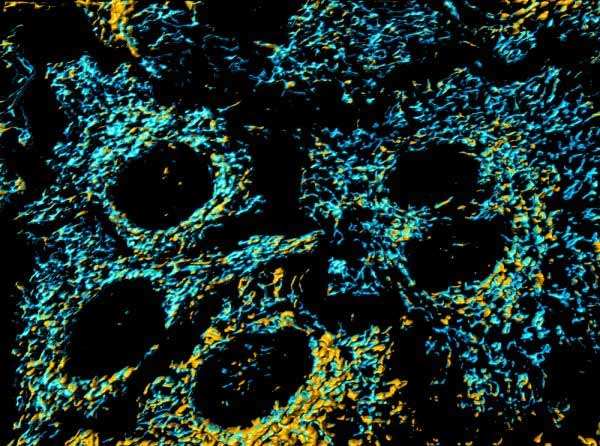
Compelling evidence suggests exercise is an important component of cancer prevention and care; slashing your risk of developing cancer, improving your chances of successful recuperation, and diminishing your risk of cancer recurrence.
A pattern revealed in these studies is that the longer you exercise, the more pronounced the benefits. Studies show that both men and women who exercise during their early years have a lower risk of cancer later in life.
But like most things in life, exercise must also be done in moderation and be balanced. There is a sweet spot and excessive exercise can cause its own set of issues, but most in the U.S. are far from being at risk for this problem.
According to a 2003 paper published in the journal Medicine & Science in Sports & Exercise,”more than 100 epidemiologic studies on the role of physical activity and cancer prevention have been published.”
The authors note that:
“The data are clear in showing that physically active men and women have about a 30 to 40 percent reduction in the risk of developing colon cancer, compared with inactive persons …
With regard to breast cancer, there is reasonably clear evidence that physically active women have about a 20 to 30 percent reduction in risk, compared with inactive women.
It also appears that 30 to 60 min.· of moderate- to vigorous-intensity physical activity is needed to decrease the risk of breast cancer, and that there is likely a dose-response relation.”
Adrenaline-Dependent Immune Cells Shrink Tumors
Most recently, research published in Cell Metabolism showed that active mice experienced a 50 percent reduction in tumor growth compared to inactive mice. The mechanism behind this rather remarkable occurrence is thought to be related to the rush of adrenaline that occurs during high intensity exercise.
The adrenaline helps circulate natural killer (NK) immune cells into tumors in the lung, liver, and skin, where they go to work to kill off and eliminate the cancerous cells.
To test this theory, the researchers injected mice with adrenaline. As predicted, they found that this caused NK cells to move into the bloodstream, and when a tumor was present, the NK cells would infiltrate it.
Then, to confirm the link between NK cells and tumor shrinkage, they used specially bred mice that do not have NK cells. In these mice, exercise had no effect on the tumors.
Blocking the flow of adrenaline had the same effect — the tumors remained, even when the mice exercised. As reported by Medical News Today:
“The link between adrenaline-dependent mobilization of NK cells and tumor infiltration was identified as the immune signaling molecule, IL-6. Muscle tissue is known to release IL-6 during exercise.
What surprised the researchers was that adrenaline specifically called for IL-6 sensitive NK cells, and that the IL-6 molecules help to guide the immune cells to the tumors.” [Emphasis mine]
Exercise Improves Cancer Survival Rates and Cuts Recurrence
Should you end up with cancer, don’t fall for the old myth that rest is the best medicine. On the contrary, exercise has been shown to significantly boost your chances of recovery and survival.
For example, a 2005 Harvard study found that breast cancer patients who exercised moderately for three to five hours a week lowered their odds of dying from cancer by about half, compared to sedentary patients. In fact, any amount of weekly exercise increased a patient’s odds of surviving breast cancer to some degree, and this benefit remained constant regardless of whether women were diagnosed early on or after their cancer had spread.

Exercise has also been shown to minimize the side effects of conventional cancer therapy, and improve cancer patients’ quality of life.
A recent analysis of 16 studies found that across the board, cancer patients assigned to an exercise program consistently report significantly better quality of life compared to those in the non-exercising control groups, including higher self-esteem and physical functioning, less fatigue, reduced length of hospital stays, and fewer doctor’s visits.
Some cancer organizations now promote exercise as part of standard cancer care, although this information has yet to fully filter down into general oncology. Two examples of organizations that promote exercise for cancer patients are the Macmillan Cancer Support organization in the U.K. and Johns Hopkins in the U.S. Both encourage cancer patients to exercise for 2.5 hours per week.
Exercise also lowers your odds of cancer recurrence once you’ve successfully recuperated. A study published in 2012 found that breast and colon cancer patients who exercised regularly had half the recurrence rate compared to non-exercisers.
Exercise Combats Cancer in Many Ways
Exploring the relationship between exercise and cancer, a study in the British Medical Journal found that exercise affects several biological functions that may directly influence your cancer risk, including changes in energy balance, immune function, antioxidant defense, DNA repair, and hormone levels.
Indeed, there’s not just one mechanism responsible for its cancer-fighting effects. There are many, starting with the fact that exercise decreases your insulin resistance, which is a profoundly effective strategy to reduce your cancer risk. By creating a low sugar environment, you strongly discourage the growth and spread of cancer cells.
This is also one of the reasons why a high-fat diet tends to discourage cancer. A key point to remember is that while normal cells can use either glucose or ketones derived from fat as fuel, cancerous cells lack this metabolic flexibility and need glucose to survive and multiply. Cut off their supply of fuel, and you effectively starve the cancer cells to death.

Exercise, by lowering your blood sugar levels and normalizing your insulin sensitivity, has a similar effect — it essentially creates an environment that is less conducive to cancer growth.
Exercise also helps you shed excess fat and maintain a healthy weight (this is particularly true for high-intensity interval training). Excess weight is a significant risk factor, and obesity is responsible for an estimated 500,000 cancer cases worldwide each year. The link between obesity and cancer is primarily hormone-driven, as fat cells produce excess estrogen.
This also helps explain why exercise during childhood reduces your lifetime cancer risk, and why obese children are at a significantly heightened risk of cancer in their adult years.
Physical activity also improves circulation, driving more oxygen into your tissues, and circulating immune cells in your blood. By improving blood flow to your liver, it also helps your body detoxify potentially harmful substances, including excess estrogen that may spur estrogen-sensitive cancers.
The Metabolic Theory of Cancer
Perhaps most importantly, exercise promotes mitochondrial health. Mitochondrial damage can trigger genetic mutations that can contribute to cancer, so optimizing the health of your mitochondria is a key component of cancer prevention. In fact, mitochondrial dysfunction is at the core of virtually all diseases.

By forcing your mitochondria — those little power stations that produce ATP in your cells — to work harder, your mitochondria start making reactive oxygen species (ROS), which act as signaling molecules. One of the functions they signal is to make more mitochondria.
So, when you exercise, your body will respond by creating more mitochondria to keep up with the heightened energy requirement. Travis Christofferson’s book, “Tripping Over the Truth: The Return of the Metabolic Theory of Cancer Illuminates a New and Hopeful Path to a Cure” goes into all of this in great detail, and is a must-read for anyone interested in preventing or recovering from cancer.
Exercise stimulates AMPK and SIRT1, which secondarily inhibits mTOR, which then stimulates mitochondrial biogenesis and mitophagy, both of which are deadly to cancer. In essence, cancer can be viewed as a metabolic disorder, and the key to prevention and recovery lies in restoring mitochondrial function and increasing mitochondrial numbers. Exercise helps you do both.
Also, besides creating an environment that discourages cancer growth, another reason why nutritional ketosis works so well for cancer is because it too boosts mitochondrial function and drives down inflammation.
Important Notice: This article was originally published at www.theepochtimes.com by Mind & Body where all credits are due.
Disclaimer
The watching, interacting, and participation of any kind with anything on this page does not constitute or initiate a doctor-patient relationship with Dr. Farrah™. None of the statements here have been evaluated by the Food and Drug Administration (FDA). The products of Dr. Farrah™ are not intended to diagnose, treat, cure, or prevent any disease. The information being provided should only be considered for education and entertainment purposes only. If you feel that anything you see or hear may be of value to you on this page or on any other medium of any kind associated with, showing, or quoting anything relating to Dr. Farrah™ in any way at any time, you are encouraged to and agree to consult with a licensed healthcare professional in your area to discuss it. If you feel that you’re having a healthcare emergency, seek medical attention immediately. The views expressed here are simply either the views and opinions of Dr. Farrah™ or others appearing and are protected under the first amendment.
Dr. Farrah™ is a highly experienced Licensed Medical Doctor certified in evidence-based clinical nutrition, not some enthusiast, formulator, or medium promoting the wild and unrestrained use of nutrition products for health issues without clinical experience and scientific evidence of therapeutic benefit. Dr. Farrah™ has personally and keenly studied everything she recommends, and more importantly, she’s closely observed the reactions and results in a clinical setting countless times over the course of her career involving the treatment of over 150,000 patients.
Dr. Farrah™ promotes evidence-based natural approaches to health, which means integrating her individual scientific and clinical expertise with the best available external clinical evidence from systematic research. By individual clinical expertise, I refer to the proficiency and judgment that individual clinicians acquire through clinical experience and clinical practice.
Dr. Farrah™ does not make any representation or warranties with respect to the accuracy, applicability, fitness, or completeness of any multimedia content provided. Dr. Farrah™ does not warrant the performance, effectiveness, or applicability of any sites listed, linked, or referenced to, in, or by any multimedia content.
To be clear, the multimedia content is not intended to be a substitute for professional medical advice, diagnosis, or treatment. Always seek the advice of your physician or other qualified health providers with any questions you may have regarding a medical condition. Never disregard professional medical advice or delay in seeking it because of something you have read or seen in any website, video, image, or media of any kind. Dr. Farrah™ hereby disclaims any and all liability to any party for any direct, indirect, implied, punitive, special, incidental, or other consequential damages arising directly or indirectly from any use of the content, which is provided as is, and without warranties.








